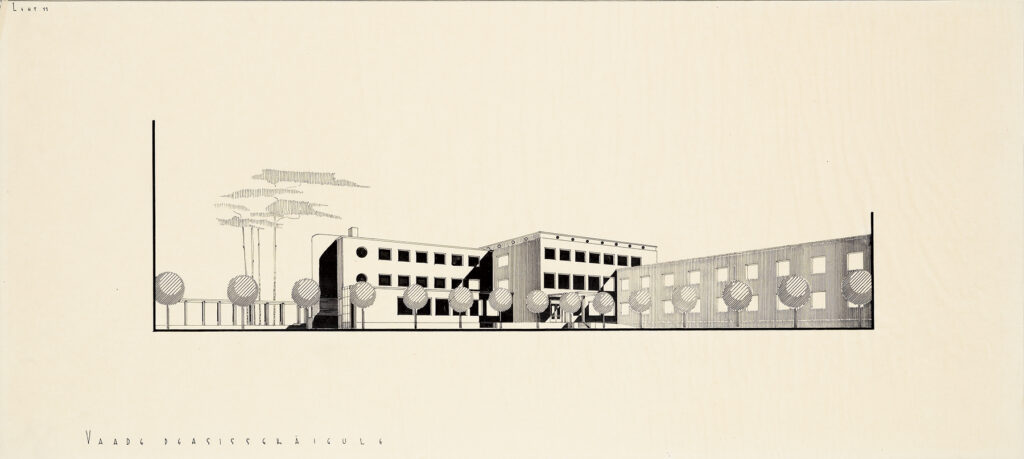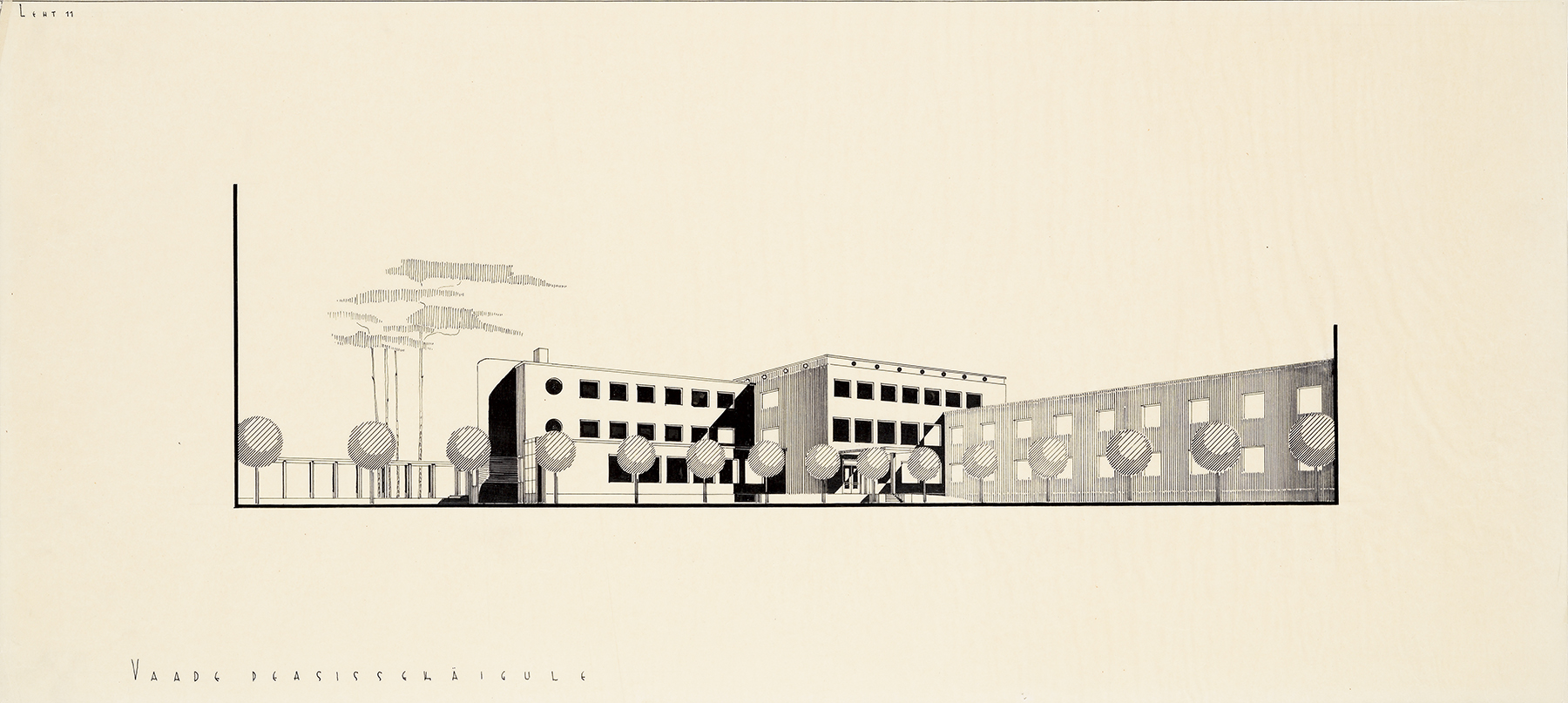Edgar Velbri, design 1932, constructed. MEA 14.1.46
Johannes Orro’s dwelling at Raudtee Street in Tallinn
Bustling Nõmme had already grown from a holiday village to a reasonably-sized town (possessing town privileges from 1926–1940, after which it became a district of Tallinn) when café-owner Major Johannes Orro presented the design for his new building to the town government in 1932. True to the era of thriving small businesses, the ground floor of the residential building in the Kivimäe neighbourhood housed a bakery – an unquestionably successful venture, given its close proximity to the railway station. The design was drafted by young architect and Tallinn Technical University student Edgar Velbri, who was fascinated by old-fashioned architecture; probably a result of his summer internships at the Estonian National Museum, during which he surveyed Estonian farm structures. The hipped roofs, romantic shutters, and vertical siding characteristic of Estonian agricultural architecture later carried over into the architect’s personal style. Complementing such features with his talent for creating functional floorplan solutions, Velbri gained great public favour and demand, and his cosy structures gained their own nickname: “Velbri houses”. This single-page ink drawing on tracing paper is a typical 1930s residential design project, which was submitted for official approval along with an explanatory letter. Text: Sandra Mälk











